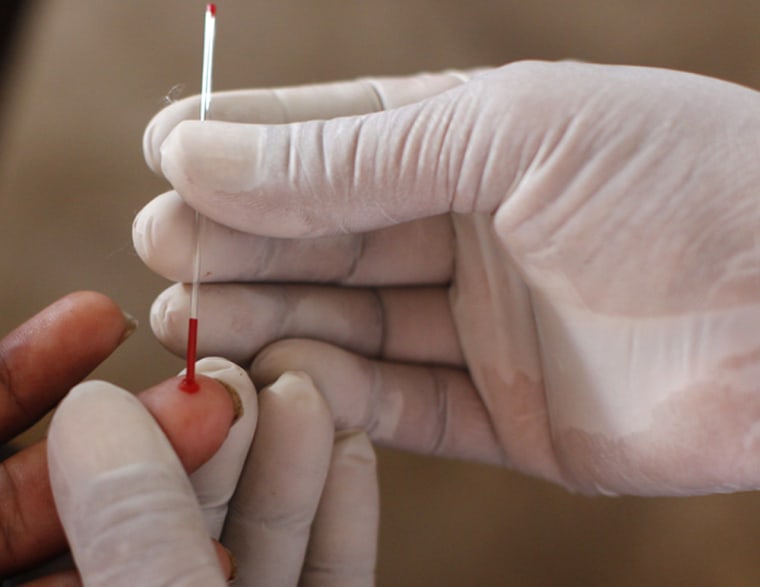Crime scene investigators with little more to go on than a drop of blood have a new test that can help them determine the age of the person who was bleeding, according to a study in today's issue of Current Biology.
The test will work even on dried bloodstains -– perhaps even those revealed by a heat-vision camera. This could help detectives reopen cases that went cold years ago. And it's only a matter of time before screenwriters start working the technology into the plotlines for "Law and Order" or "C.S.I."
The technique, developed by scientists at Erasmus MC University Medical Center Rotterdam in the Netherlands, is based on the fact that certain DNA molecules in some blood cells decrease with age, TG Daily reports:
"The molecules used are residues of the immune system known as sjTREC molecules. These special DNA molecules are released in blood cells as a result of the adaptations that have to be made by newly formed specific immune cells -- T cells -- to recognize bacteria, viruses, parasites or possibly cancer cells. Their number decreases with age."
The age test is accurate to within nine years. That should be sufficient to place unknown people –- criminals or missing persons, for example -– into generational categories spanning about 20 years.
Study co-author Manfred Kayser, a professor of forensic molecular biology, said in a news release that this is a harbinger for what's to come, as researchers uncover new methods designed to reconstruct the appearance of unknown persons from biological samples at crime scenes.
One test, for example, can determine eye color from DNA and has already been put to forensic use.
"Conventional DNA profiling applied in forensics can only identify persons already known to the investigating bodies, because the approach is completely comparative," he said. In cases where the DNA at the scene doesn't match any known suspect tested, "it is expected that appearance information estimated from evidence material will help in finding unknown persons."
More about the forensic frontier:
- New camera 'sees' invisible blood stains
- Cat fur puts criminals behind bars
- Crime labs cut to the bone
- Readers, pick your poison
John Roach is a contributing writer for msnbc.com. Connect with the Cosmic Log community by hitting the "like" button on the Cosmic Log Facebook page or following msnbc.com's science editor, Alan Boyle, on Twitter (@b0yle).
